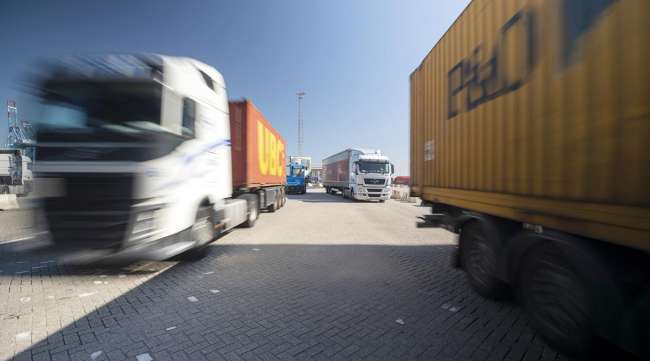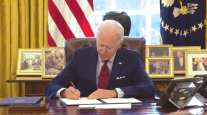CO2 Caps Coming for Trucks in European Union

European Union negotiators agreed to impose caps on carbon dioxide from trucks for the first time, stepping up the fight against climate change with a challenge to manufacturers such as Daimler AG.
Representatives of EU governments and the European Parliament fixed a 30% CO2-reduction target for 2030 compared with 2019 levels. At a meeting that ended early Feb. 19 in Brussels, the officials also endorsed an interim emissions cut of 15% for 2025.
“It is a great success that the EU is taking action for the first time on CO2 emissions from heavy-duty vehicles,” Bas Eickhout, a Dutch member steering the draft law through the 28-nation Parliament, said in a statement after the breakthrough was reached during nearly seven hours of talks.
In December, EU negotiators reached an accord to tighten caps on CO2 from cars.
The deal on CO2 limits for trucks upholds reduction targets proposed by the European Commission, the EU’s regulatory arm, in a May 2018 draft law and endorsed by the bloc’s national governments in December. By contrast, the EU Parliament last year urged more ambitious cuts of 20% in 2025 and 35% in 2030.
The main lobby group for European truck makers has said that even the original targets proposed by the Brussels-based commission and backed by EU governments would be a “major challenge” for the industry.
In a response Feb. 19 to the agreement negotiated overnight, the industry group — known as ACEA — called the CO2-cut goals “highly demanding” and said EU governments must focus on developing the necessary infrastructure.
“We can now only call upon member states to urgently step up their efforts to roll out the infrastructure required for charging and refueling the alternatively powered trucks which will need to be sold en masse if these targets are to be met,” ACEA Secretary General Erik Jonnaert said in an e-mail statement.
While abandoning its demand for stricter headline caps, the EU Parliament won a provision setting a 2% “sales benchmark” for zero and low-emission vehicles as of 2025 “to incentivize manufacturers to invest in alternatives to polluting diesel trucks,” Eickhout said.
In addition, the commission will be required in 2022 to propose post-2030 reduction targets, he said.
The agreement among negotiators still requires the final approval of EU governments and of the 751-seat Parliament — steps that are usually formalities.




